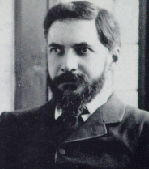
|

|
| 2. Previous Excavations and Studies | |
| Two seasons of excavations were conducted in 1928 and 1929 by the British
School of Archaeology in Egypt under the direction of W.M.F. Petrie. The excavated
areas of the mound revealed little in comparision with the many tombs that
were investigated within the cemetaries around the city, but both give a
pictures of nearly continuous settlement from the Middle Bronze Age IIB (ca.
1750 BCE) to the Roman Period.
The name of the site does not reflect any ancient toponymy. The Arab name "Tell el-Far'ah" (or Tell el-Fari'a) simply means "high mound of ruins." Without any solid reasons, Petrie identified the site with biblical Beth-Pelet. |

|
| Similarly, W.F. Albright's identification as Sharuhen is not founded on any convincing evidence. With better reasons, Nadav Na'aman recently proposed to identify the site with biblical Shur (Genesis 16:7, 25: 18, Exodus 15:22, 1 Samuel 15:7 and 27:8) (Na'aman 1980: 100-105). | |
| From the Middle Bronze Age II, the outstanding finds are the fortifications and the city gate. There are only few remains of living quarters. In the south-east is a gate with three pairs of attached pilasters, built entirely of bricks on foundation of hard-beaten sand. On each side of the corridor stood massive towers with rooms. Except for the west side and part of the southern and northern sides, the mound is protected by naturally steep slopes above the deep wadi. The south and west sides were fortified by a moat and a sloping glacis of beaten earth with a wall on top of it. The Middle Bronze Age site was identified as a Hyksos settlement. | |